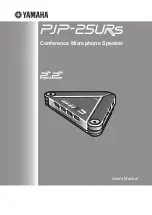
V
ANDERSTEEN
A
UDIO/
V
IDEO
The next time you’re in a movie theater, shut your eyes
and just listen to the movie. Listen carefully to the voices,
music and sound effects with the same critical ear you
would use to judge a stereo system. Without the big im-
pressive picture commanding most of your attention and
manipulating your emotions, it is easy to hear how sub-
standard the sound truly is. Then try several different
seats throughout the theater; you will find that they all
have about the same poor sound.
In a theater, it is more important that every viewer be
able to understand the dialog, hear the music and experi-
ence the sound effects than it is for the dialog, music and
sound effects to sound real. Theater systems are engi-
neered so that the kid in the front row right under the
screen and the guy way back in the rear corner hear ade-
quate sound even if it is detrimental to the sound in the
central part of the theater. The sonic performance for the
best seats is compromised to improve the performance for
the worst seats. Engineering for this extreme level of con-
sistency, guarantees consistent mediocrity. Luckily, it is
not a mediocrity we have to live with in our home sys-
tems.
During the development of the VCC-5 we had the
enlightening opportunity to use and evaluate numerous
theater, home theater and audio/video systems with a wide
assortment of equipment and configurations. We found
that certain audio/video systems had better clarity, greater
intelligibility and a faithfulness to the original sonic truth
that other systems could not match. Based upon these
superior systems, we developed some recommendations
on building an audio/video system that would allow you,
your family and your friends to experience videos, laser
discs, DVDs, CDs, records and even broadcast television
with maximum sonic realism.
START WITH A GOOD MUSIC SYSTEM
An accurate, detailed two speaker music system is the
perfect basis for a high-fidelity audio/video system.
Speakers and electronics that sound real on music will
also sound real on voices and other film sounds. Films
contain many sounds of real life that we hear everyday so
we instinctively use those familiar sounds to evaluate the
visual realism. If your system cannot realistically repro-
duce familiar sounds as well as familiar sights, you will
never be fully drawn into the emotional experience of a
film.
Whether you build your audio/video system from
scratch or as an extension of an existing music system, the
performance of the core components—the front left and
right speakers, the preamplifier and the main front ampli-
fier—will define the ultimate capabilities of the entire
system. The core components are where an investment in
better speakers or a superior preamplifier or power ampli-
fier will significantly improve the performance of your
system on both film and
music.
A
DD
S
UBWOOFERS
Once you have the core components, the next step in
building an audio/video system is the addition of subwoofers.
While subwoofers are optional in a music system, they are an
integral and required part of an audio/video system. Movie
makers take considerable artistic license with the low fre-
quencies to create incredible sound effects that could never
occur in the real world. Even with full-range main speakers
and a powerful main amplifier, the high-intensity low fre-
quency sound effects in modern movies can only be fully ex-
perienced with subwoofers and can actually damage a system
without subwoofers.
To insure proper blending with subwoofers, filter theory
dictates that the main speakers must have predictable re-
sponse at least an octave below the crossover point. For an
80Hz subwoofer crossover point, the main speakers must
have predictable response to 40Hz or lower. This is why it is
impossible to successfully mate subwoofers with mini-
speakers—the small speakers simply cannot reach the re-
quired full octave below any reasonable subwoofer crossover
point. Mated with full-range speakers however, powered sub-
woofers reduce the demands on the main amplifier as well as
the speakers so that the system's treble and midrange are im-
proved along with the bass.
There are significant advantages to using two subwoofers
in an audio/video system rather than a single unit. Summing
the channels into a single subwoofer alters or cancels all the
low frequency information containing phase differences be-
tween the channels. Stereo subwoofers reproduce all of the
bass information complete with the phase differences. Multi-
channel processors sound better with the LFE (Low Fre-
quency Effects) information redirected to the front left and
right channels where stereo subwoofers are located. Stereo
subwoofers are also more linear than a single unit since they
introduce the bass into the room at two different places and
lend themselves to natural placement in the corners where the
low frequency room gain is desirable on spectacular film
sound effects.
Whether you use one or two, the Vandersteen 2Wq pow-
ered subwoofer is an extraordinary performer in a high-
fidelity home theater system where it has the power, cone
area and frequency extension for you to fully experience the
most intense low-frequency film sound effects. The high mo-
tor-to-cone-area ratio of the 2Wq’s three 8 inch drivers re-
duces distortion and provides a more seamless transition to
the main speakers than is possible with a larger driver. The
2Wq features adjustable Q so the bass can be optimized for a
music or home theater system and tailored to match your
room and personal taste. In a system where the LFE output
features and configuration options are desirable, a V2W can
be added.
F
ROM
S
TEREO
T
O
S
URROUND
A
ND
B
ACK
A
GAIN
Now that the core system and subwoofers are in place, it is
time to provide surround sound capabilities to the system. In
a system built around a preamplifier
and power amplifier,
VCC-5 Operation Manual
2
Vandersteen Audio


























